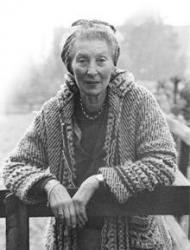Planning worship?
Check out our sister site, ZeteoSearch.org,
for 20+ additional resources related to your search.
- |
User Links
Search Results
NEWCASTLE (53512)
Appears in 2 hymnals Tune Sources: English traditional Tune Key: D Major Incipit: 53512 12153 51
NEWCASTLE (53512)
Up to those bright and gladsome hills
Author: Henry Vaughan, 1622-95 Appears in 14 hymnals Scripture: Psalm 121 Used With Tune: NEWCASTLE
Up to those bright and gladsome hills
The earth's the Lord's and all therein
Author: DNS Meter: 8.6.8.6 D Appears in 1 hymnal Topics: Scriptural Songs Scripture: Psalm 24 Used With Tune: NEWCASTLE Text Sources: Stanzas 3 and 4 Scottish Psalter (1650)
The earth's the Lord's and all therein
Up to those bright and gladsome hills
Author: Henry Vaughan, 1622-95 Hymnal: The Cambridge Hymnal #119 (1967) Scripture: Psalm 121 Tune Title: NEWCASTLE
Up to those bright and gladsome hills
The earth's the Lord's and all therein
Author: DNS Hymnal: The Summit Choirbook #511 (1983) Meter: 8.6.8.6 D Topics: Scriptural Songs Scripture: Psalm 24 Languages: English Tune Title: NEWCASTLE
The earth's the Lord's and all therein
Elizabeth Poston

1905 - 1987 Person Name: E. P. Arranger of "NEWCASTLE" in The Cambridge Hymnal Elizabeth Poston (24 October 1905 – 18 March 1987) was an English composer, pianist, and writer.
See more in:
Wikipedia
Elizabeth Poston
Henry Vaughan
1621 - 1695 Person Name: Henry Vaughan, 1622-95 Author of "Up to those bright and gladsome hills" in The Cambridge Hymnal Vaughan, Henry, M.D., commonly called "The Silurist," was one of twin brothers born of a titled family at Newton, Llansaintffiad, in 1621. After studying under the Rev. Matthew Herbert, Rector of Llangattock, he proceeded to Jesus College, Oxford, in 1638; but through the national troubles of those days, his studies, in common with those of his brother, were interrupted, and they had to leave the University. Subsequently he entered the medical profession, and practised at Brecon and at Newton. He died April 23, 1695. His published works include, Poems with the Tenth Satire of Juvenal Englished, 1646; Olor Iscanus, 1651; The Mount of Olives, 1652, &c. As a religious poet he followed very closely the peculiarities of George Herbert, of whose writings he was a great admirer. His best and most devotional poems were written during a severe affliction, and were published in his Silex Scintillans. After being almost forgotten for more than 200 years, his quaint, thoughtful, devotional, and, in many instances, beautiful poems, are receiving attention at the hands of hymnal compilers and others.
From the Silex Scintillans several pieces have been taken as hymns for public worship. The following, all from the first edition of 1650, are in common use:—
1. As travellers when the twilight's come. Life a Pilgrimage.
2. Bright shadows of true rest! some shoots of bliss. Sundays. Sometimes as "Types of eternal rest, fair buds of bliss."
3. Joy of my life, while left me here. Guiding Stars.
4. King of mercy, King of love. God our King.
5. Lord, with what courage and delight. Cheerfulness.
6. My. God and King, to Thee I bow my knee. Lent.
7. Since in a land not barren still. Love and Discipline.
8. Up to those bright and gladsome hills. Ps. cxxi.
9. What needs a conscience, clear and bright? Conscience.
10. When one loud blast shall rend the deep. Advent. Judgment.
11. Zion's true glorious God! on Thee. Praise.
Of Vaughan's hymns the most widely used are:— "Bright Queen of heaven," "My soul, there is a countrie," and "Up to these bright and gladsome hills."
--Excerpts from John Julian, Dictionary of Hymnology (1907)
=====================
Vaughan, H., p. 1206, i. Nos. 6, 9, 11, are from the 2nd ed., 1655 of his Silex Scintillans, pt. ii., pp. 60, 40, 68. No. 10 is from "When through the North," &c, in the 1st ed. 1650, p. 13.
--John Julian, Dictionary of Hymnology, New Supplement (1907)
Henry Vaughan
Monastery of Our Lady of the Rosary (Summit, N.J.)
Person Name: DNS Author (stanzas 1 and 2) of "The earth's the Lord's and all therein" in The Summit Choirbook The Monastery of Our Lady of the Rosary is a Dominican convent in Summit, New Jersey. It was founded in 1919.
Monastery of Our Lady of the Rosary (Summit, N.J.)


 My Starred Hymns
My Starred Hymns

